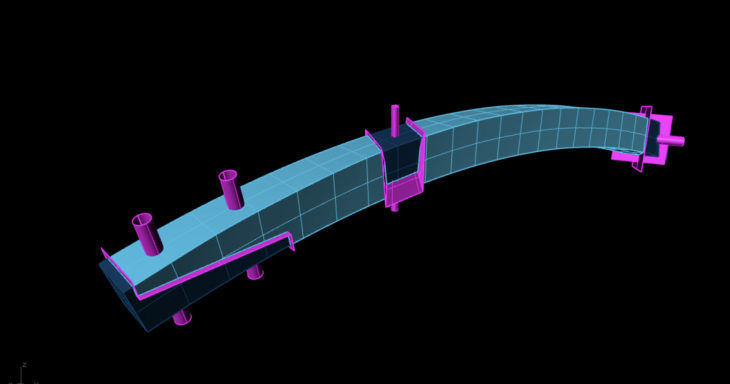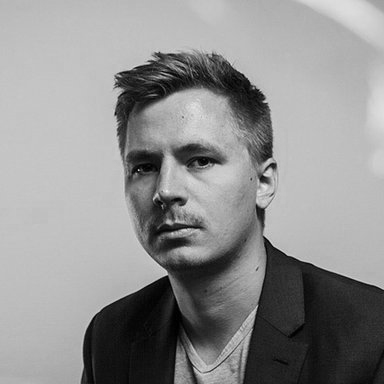DIGITAL CRAFTING FOR FREEFORM TIMBER STRUCTURES
Faculty: Tom Svilans
 Credits: Grove by Tom Svilans and Paul Poinet
Credits: Grove by Tom Svilans and Paul Poinet
SYLLABUS
In Technics and Civilization (1934), Lewis Mumford praises wood as helping to deliver humankind “from the servitude to the cave and to the cold earth itself”. Indeed, wood has been a fundamental resource since the dawn of civilization, not just as a building material, but as a natural resource deeply mired in culture, politics, and technology.
There are two stories. The first is about the nature and behaviour of wood – it can be cut, glued, bent, twisted – and how it can be rediscovered, reinterpreted, and reborn within the context of digital culture today. What do 3D scanning, digital simulation, semantically-loaded drawing, and finally automated fabrication have to offer to the crafting of wood objects? The second is about the relationship between the architect and the fabricated artefact, interfaced through the potentials of digital crafting. The ubiquity and pervasiveness of digital tools have allowed an increasing engagement with processes of production, as well as increasing diversity in the development of complex structures, thanks to the potentials of digital tools within this process. What is the architect’s role in this transformation? From Bob Sheil, advocating the birth of the protoarchitect as a negotiator between the drawn and the made, to other practitioners, such as Michael Stacey and Fabian Scheurer, saying that the integration of design and making is crucial for achieving a new digitally-enabled definition of craftsmanship today, these have the potential to lead to a more intelligent, effective, and well-built environment, through an enhanced dialogue between design and production thanks to the development of specific tools and scripts based on materially embedded knowledge and data. How can we develop these notions of thinking-drawing-making through the combination of digital modelling and simulation, towards woodcraft powered by robotics and automation?
 Credits: Enignum shelves by Joseph Walsh
Credits: Enignum shelves by Joseph Walsh
LEARNING OBJECTIVES
At course completion the student will:
- understand the basics of modelling free-form glulam geometries using provided software tools;
- understand basic methods of analysing free-form glulam elements for bending limits, production constraints, and fibre direction;
- be capable of modelling and representing free-form glue-laminated structures;
- be capable of operating between multiple 3d modelling environments.
EXERCISE
Students will be introduced to the modelling of free-form timber structures. Students will explore material and fabrication constraints, challenges in managing data, and strategies for traversing the complexity of the design-to-fabrication process. They will learn how models at the scale of the joint and individual connection can be encapsulated and parametrized for use within larger, interconnected models at the scale of the structure. Students will learn how to take into account the properties of glue-laminated timber such as fibre direction, bending limits, and production methods. The process will be documented through rendering, video, and drawing.
 Fabrication model for free-form glulam elements by Tom Svilans
Fabrication model for free-form glulam elements by Tom Svilans
FACULTY

Tom Svilans is an architectural designer and researcher focusing on the intersection of fabrication, materiality, and emerging technologies.
Tom is currently doing a PhD at CITA (Centre for IT and Architecture) in Copenhagen, Denmark, as part of the EU-funded InnoChain research network. His research focuses on the design and manufacture of large-scale free-form timber structures. Tom is also a Senior Teaching Fellow on the Design for Manufacture M. Arch. programme at the Bartlett School of Architecture, UCL in London, UK. Tom also co-directs MAJORVISUAL, an image-making practice specializing in high-quality architectural visualization. As part of his research, Tom collaborates with leading Swiss timber contractor Blumer Lehmann AG and multi-disciplinary Scandinavian architecture practice White arkitekter AB.
Tom has presented and published his work internationally. Tom has taught at, among others, the Bartlett School of Architecture, UCL; the Architectural Association (AA); and the Royal Danish Academy of Fine Arts Schools of Architecture, Design and Conservation (KADK).